Do you have a question about the Triumph Tiger 1050 2008 and is the answer not in the manual?
Explains how important information, warnings, and cautions are presented.
Covers critical safety advice for riding, including fatigue, alcohol, and protective gear.
Details potential stability issues like wobble/weave and handlebar/footrest use.
Illustrates and describes the location of various warning labels on the motorcycle.
Diagrams and lists of major external parts like headlight, fuel tank, and drive chain.
Diagrams and lists of controls on the handlebars and levers.
Explains the location of the Vehicle Identification Number (VIN) and Engine Serial Number.
Details the layout and function of the motorcycle's instrument panel and indicators.
Explains how to read speed, distance traveled, and engine RPM.
Covers trip computer displays, settings, and clock adjustment procedures.
Describes the operation and readings of the fuel and coolant temperature gauges.
Explains the meaning and function of various warning and indicator lights.
Covers ignition switch, key functions, and handlebar switch operations.
Details fuel grade, oxygenated fuels, and safe refueling practices.
Provides instructions for parking the motorcycle safely using the side stand.
Outlines procedures for breaking in the engine and performing daily safety checks.
Step-by-step guide on how to safely start and stop the motorcycle's engine.
Instructions on smooth acceleration from a standstill and gear shifting techniques.
Details proper braking procedures, including emergency braking and ABS operation.
Covers safe parking methods and considerations for high-speed riding.
Essential checks on tires, brakes, fuel, oil, and coolant before riding.
Explains how accessories and load affect motorcycle stability and handling.
Provides safety advice regarding passengers, luggage, and speed limits.
Details the importance of regular maintenance and the service schedule.
Covers engine oil level checks, oil/filter changes, and oil specifications.
Instructions for checking coolant levels, adjustments, and system maintenance.
Procedures for adjusting throttle control, clutch, and drive chain.
Details brake pad wear inspection, fluid checks, and compensation.
Covers tire pressures, tread depth, wear inspection, and replacement guidelines.
Guidance on battery handling, storage, charging, and fuse box identification.
Instructions for adjusting and replacing headlight, signal, and license plate bulbs.
Advice on washing, drying, and protecting the motorcycle's surfaces.
Steps for preparing the motorcycle before storing it for an extended period.
Steps for getting the motorcycle ready for use after a period of storage.
Provides measurements, weight capacities, and engine type/displacement.
Details engine performance figures and fuel system components.
Lists specifications for ignition, transmission, and tire sizes.
Specifies battery, alternator, lights, frame geometry, and torque values.
Explains how important information, warnings, and cautions are presented.
Covers critical safety advice for riding, including fatigue, alcohol, and protective gear.
Details potential stability issues like wobble/weave and handlebar/footrest use.
Illustrates and describes the location of various warning labels on the motorcycle.
Diagrams and lists of major external parts like headlight, fuel tank, and drive chain.
Diagrams and lists of controls on the handlebars and levers.
Explains the location of the Vehicle Identification Number (VIN) and Engine Serial Number.
Details the layout and function of the motorcycle's instrument panel and indicators.
Explains how to read speed, distance traveled, and engine RPM.
Covers trip computer displays, settings, and clock adjustment procedures.
Describes the operation and readings of the fuel and coolant temperature gauges.
Explains the meaning and function of various warning and indicator lights.
Covers ignition switch, key functions, and handlebar switch operations.
Details fuel grade, oxygenated fuels, and safe refueling practices.
Provides instructions for parking the motorcycle safely using the side stand.
Outlines procedures for breaking in the engine and performing daily safety checks.
Step-by-step guide on how to safely start and stop the motorcycle's engine.
Instructions on smooth acceleration from a standstill and gear shifting techniques.
Details proper braking procedures, including emergency braking and ABS operation.
Covers safe parking methods and considerations for high-speed riding.
Essential checks on tires, brakes, fuel, oil, and coolant before riding.
Explains how accessories and load affect motorcycle stability and handling.
Provides safety advice regarding passengers, luggage, and speed limits.
Details the importance of regular maintenance and the service schedule.
Covers engine oil level checks, oil/filter changes, and oil specifications.
Instructions for checking coolant levels, adjustments, and system maintenance.
Procedures for adjusting throttle control, clutch, and drive chain.
Details brake pad wear inspection, fluid checks, and compensation.
Covers tire pressures, tread depth, wear inspection, and replacement guidelines.
Guidance on battery handling, storage, charging, and fuse box identification.
Instructions for adjusting and replacing headlight, signal, and license plate bulbs.
Advice on washing, drying, and protecting the motorcycle's surfaces.
Steps for preparing the motorcycle before storing it for an extended period.
Steps for getting the motorcycle ready for use after a period of storage.
Provides measurements, weight capacities, and engine type/displacement.
Details engine performance figures and fuel system components.
Lists specifications for ignition, transmission, and tire sizes.
Specifies battery, alternator, lights, frame geometry, and torque values.
| Displacement | 1050 cc |
|---|---|
| Bore x Stroke | 79 x 71.4 mm |
| Compression Ratio | 12.0:1 |
| Fuel System | Multipoint sequential electronic fuel injection |
| Transmission | 6-speed |
| Rear Brakes | Single 255mm disc, 2-piston caliper |
| Front Tire | 120/70 ZR 17 |
| Rear Tire | 180/55 ZR 17 |
| Seat Height | 835 mm (32.9 in) |
| Dry Weight | 198 kg (436 lbs) |
| Engine Type | Liquid-cooled, in-line 3-cylinder |
| Max Torque | 100 Nm (74 ft.lbs) @ 6250 rpm |
| Final Drive | X ring chain |
| Front Suspension | 43mm upside-down forks, adjustable preload |
| Rear Suspension | Monoshock with adjustable preload and rebound damping |
| Front Brakes | Twin 320mm floating discs, 4-piston calipers |
| Fuel Capacity | 20 liters (5.3 gallons) |
| Ignition | Digital |
| Frame | Aluminum beam |
| Swingarm | Single-sided, aluminum alloy |
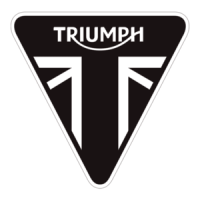


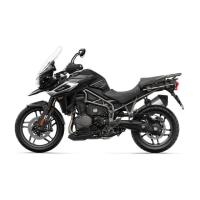


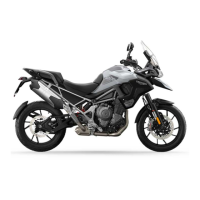
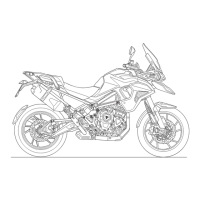
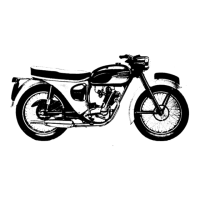
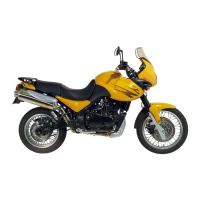
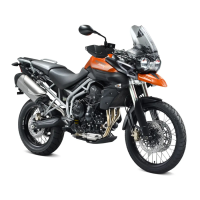
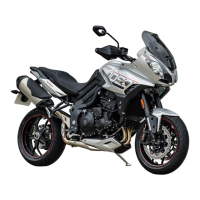
